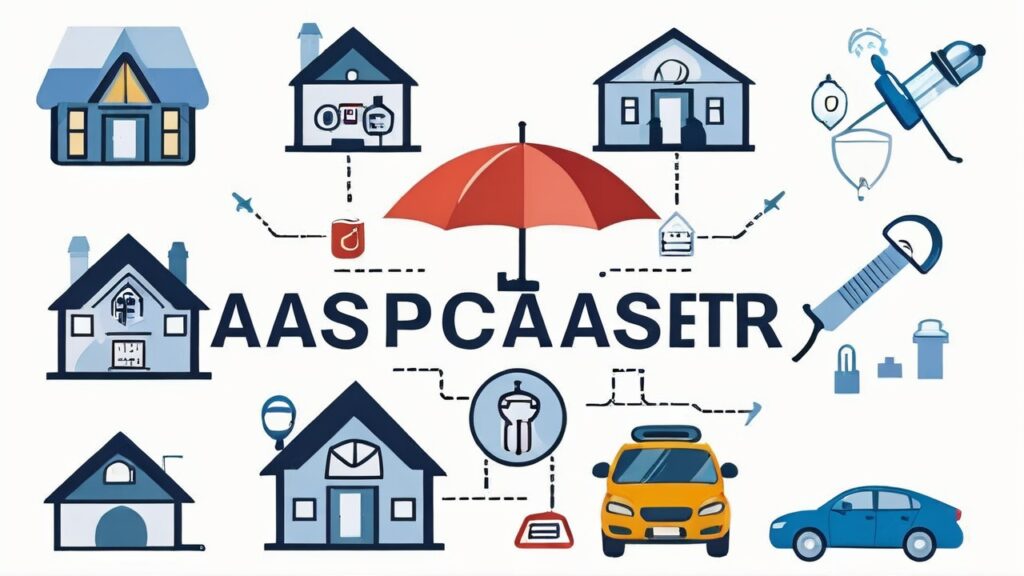In today’s unpredictable world, protecting your assets with insurance is crucial for safeguarding your financial future. Whether it’s your home, vehicle, health, or income, having the right insurance coverage can provide peace of mind and financial security against unexpected events. In this blog, we’ll explore the various types of insurance that can help protect your assets and offer valuable insights on choosing the right coverage for your needs.
1. Understanding the Importance of Insurance
Insurance serves as a financial safety net, helping to mitigate the risks associated with unforeseen events. By paying regular premiums, you transfer the risk of significant financial loss to the insurance company. This protection ensures that you can recover from setbacks such as accidents, illnesses, or natural disasters without depleting your savings or facing substantial debt.
Key Benefits of Insurance:
- Financial Protection: Covers the costs associated with losses or damages, reducing the financial burden on you and your family.
- Peace of Mind: Provides reassurance that you are prepared for unexpected events.
- Legal Compliance: Certain types of insurance, such as auto liability insurance, are legally required in many places.
2. Types of Insurance to Consider
Different types of insurance offer protection for various aspects of your life and assets. Here’s a breakdown of the key insurance policies you should consider:
Homeowners or Renters Insurance
- Homeowners Insurance: Covers damage to your home and personal property due to events like fire, theft, or natural disasters. It also provides liability coverage if someone is injured on your property.
- Renters Insurance: Offers similar coverage for personal property and liability but is designed for those who rent their homes.
What to Look For:
- Coverage Limits: Ensure your policy covers the full value of your home and belongings.
- Deductibles: Choose a deductible that balances affordability with coverage needs.
Auto Insurance
- Liability Coverage: Pays for damages or injuries you cause to others in an accident.
- Collision Coverage: Covers damage to your own vehicle in an accident.
- Comprehensive Coverage: Protects against non-collision events like theft, vandalism, or natural disasters.
What to Look For:
- Coverage Requirements: Meet your state’s minimum insurance requirements and consider additional coverage for better protection.
- Deductibles and Premiums: Choose a deductible and premium that fit your budget and risk tolerance.
Health Insurance
- Health Insurance: Covers medical expenses for doctor visits, hospital stays, prescription medications, and preventive care.
What to Look For:
- Network Coverage: Ensure your preferred healthcare providers are included in the network.
- Coverage Limits: Review coverage for essential services and check for any exclusions.
Life Insurance
- Term Life Insurance: Provides coverage for a specific term (e.g., 10, 20, or 30 years) and pays a death benefit to beneficiaries if you pass away during the term.
- Whole Life Insurance: Offers lifelong coverage with a savings component that builds cash value over time.
What to Look For:
- Coverage Amount: Choose a coverage amount that adequately supports your dependents and covers outstanding debts.
- Policy Terms: Review the terms and conditions of the policy, including any potential changes in premiums.
Disability Insurance
- Short-Term Disability Insurance: Provides income replacement for a short period if you are unable to work due to illness or injury.
- Long-Term Disability Insurance: Offers income replacement for extended periods if you cannot return to work.
What to Look For:
- Coverage Details: Check the waiting period, benefit amount, and duration of coverage.
Umbrella Insurance
- Umbrella Insurance: Provides additional liability coverage beyond the limits of your homeowners, auto, and other liability policies. It protects against major claims and lawsuits.
What to Look For:
- Coverage Amount: Choose a policy that provides sufficient coverage to protect your assets.
3. Choosing the Right Insurance Policy
Selecting the right insurance policy involves assessing your needs and comparing options:
- Assess Your Risks: Identify the risks you face and determine the types of insurance that offer the best protection for those risks.
- Compare Policies: Shop around and compare policies from different insurers to find the best coverage and rates.
- Review Policy Details: Carefully read policy terms, including coverage limits, exclusions, and deductibles.
4. Maintaining Your Insurance Coverage
Once you have insurance coverage, it’s important to regularly review and update your policies:
- Review Annually: Assess your insurance needs annually or after major life events, such as buying a new home, having a child, or changing jobs.
- Update Coverage: Adjust your coverage as needed to reflect changes in your life or assets.
- Check for Discounts: Look for available discounts, such as bundling multiple policies with the same insurer.
5. Working with an Insurance Professional
An insurance professional can help you navigate the complexities of insurance and find the best coverage for your needs:
- Consult an Agent: An insurance agent can provide personalized advice and help you select the right policies.
- Evaluate Options: Work with your agent to compare different policies and understand the benefits and limitations of each.

